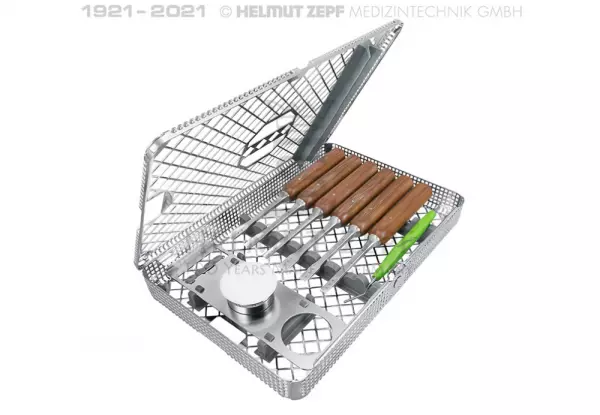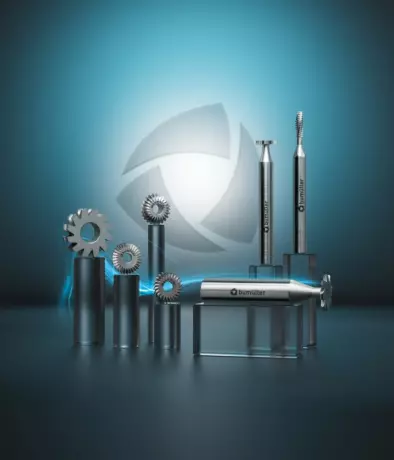
Chisels / Files / OMF - Dental Surgical Instrument-Sets
41.550.00 CHISEL, OSTEOTOM SET IDR KIT ACC. TO DR. J. C. M. ROSA CONSISTING OF: 41.550.06 C...
Portal and digital medical technology fair of the largest MedTech cluster in Germany

Chisels / Files / OMF - Dental Surgical Instrument-Sets
41.550.00 CHISEL, OSTEOTOM SET IDR KIT ACC. TO DR. J. C. M. ROSA CONSISTING OF: 41.550.06 C...

HSS milling tools Guaranteed an excellent choice. Milling tools with bore Bumüller milling cutters w...

The two most common types of dental cutters are radius and cross-toothed. Radius cutters have rounded tips and are available with 0.3 to 2.0 mm cutting edge diameters. The 2.0 mm tool is designed for efficient roughing. The smaller, 0.3 or 0.6 mm diameter tools are used for fine finishing and carving out fissures. Each type of dental cutter has a different cutting speed.
Discs: Whether it is used to cut plasters or press muffles, these angled discs make a smooth cut. They also feature an electroplated diamond grit that allows them to be easily cleaned. Discs are a good choice for general purpose dental applications, but they are also available for special applications, including saw-cut models. Regardless of the material you're cutting, a curved or straight blade is your best option.
Discs: Various shapes and sizes are available. The flexible discs are easy to insert and remove. Their stands are easy to clean and are laser engraved. Discs for dental use include a variety of different materials, including wax and PMMA. Some models can even be laser-engraved, for extra precision. They are suitable for use on all types of dental plasters. The curved cutters are more common than round ones.
Discs: Discs and blades are commonly used for shaping teeth. Single-purpose end mills are available with diameters of up to 2 1/2 inches. These mills are usually made of high-speed steel with a straight or tapered shank. Each milling cutter has a nomenclature defining the cutting edge, orientation of the tooth face, and relief from the land. If you need a special cutter for a specific job, make sure to check out a few different types.
Among the most popular types of dental cutters are periotomes and corner rounding end mills. These end mills are used to cut the PDL and widen the space. They minimize the risk of root fracture and buccal plate fracture. Their lightweight Elite stainless steel handles and Titanium Nitrite treated blades are another type of common tool for cutting teeth. The periotome is an excellent choice for orthodontic treatments. They are double-ended and shaped like the teeth they're designed to treat.
A high-quality milling machine requires first-class tools. The right tools will provide optimal performance and reduce the chances of failure. A good quality dental cutter will reduce the chances of a chipped tooth. It can be used in dental surgeries. A wide variety of types is available. If you're considering a specific type of cutter, be sure to research the features and benefits. Once you have a clear understanding of the different types, you can choose the right one for your practice.
The most common cutters are used for milling. The face cutting edge is the main part that removes the metal. A peripheral cutting edge may also remove the metal. A peripheral milling tool has a peripheral cutting edge that cuts the metal. A radial milling cutter can be used in both rotary and stationary positions. In addition to circular saws, rotary tools can be found in several different sizes. The diameter of a dental drill is the most common in a single-point tool.
Become a digital exhibitor yourself in the online portal of the largest and best-known MedTech cluster region in Germany and inform the world of medical technology about your products and services as well as about news, events and career opportunities.
With an attractive online profile, we will help you to present yourself professionally on our portal as well as on Google and on social media.